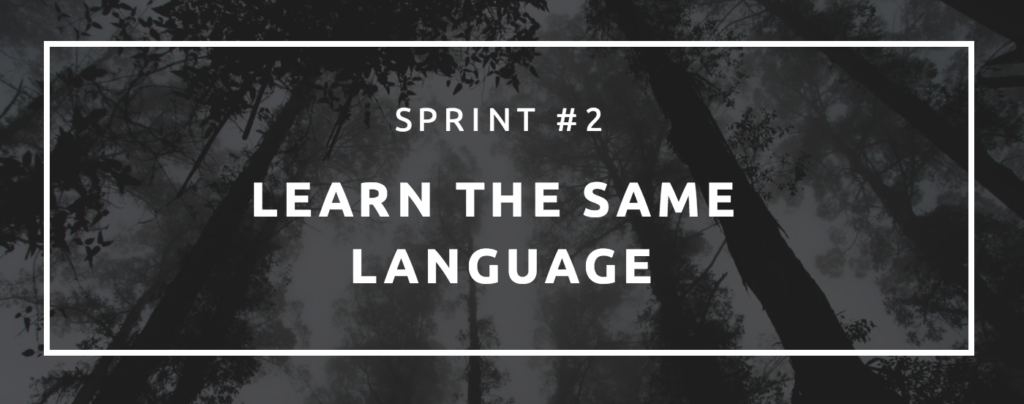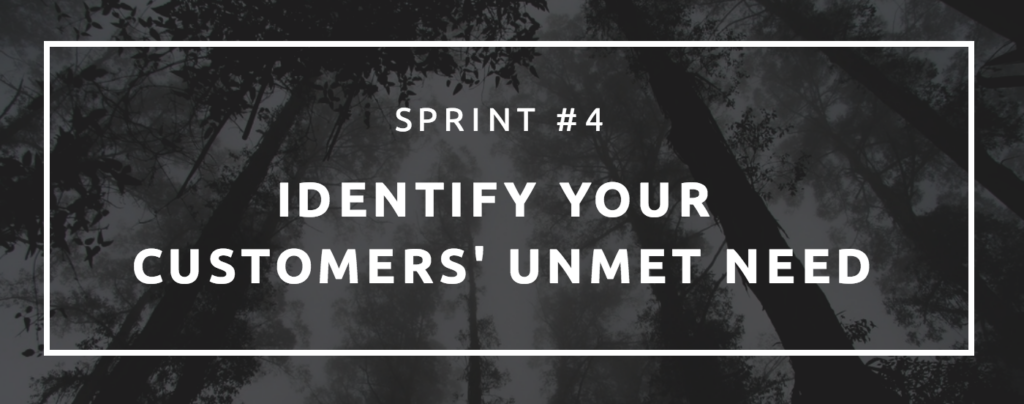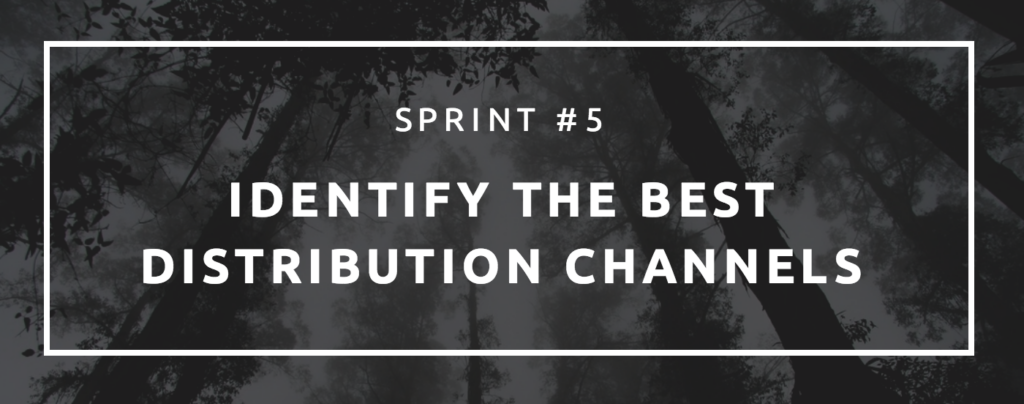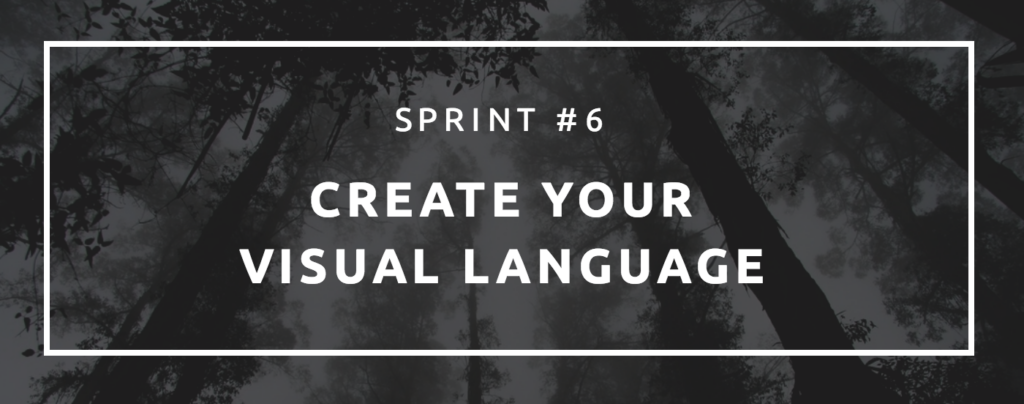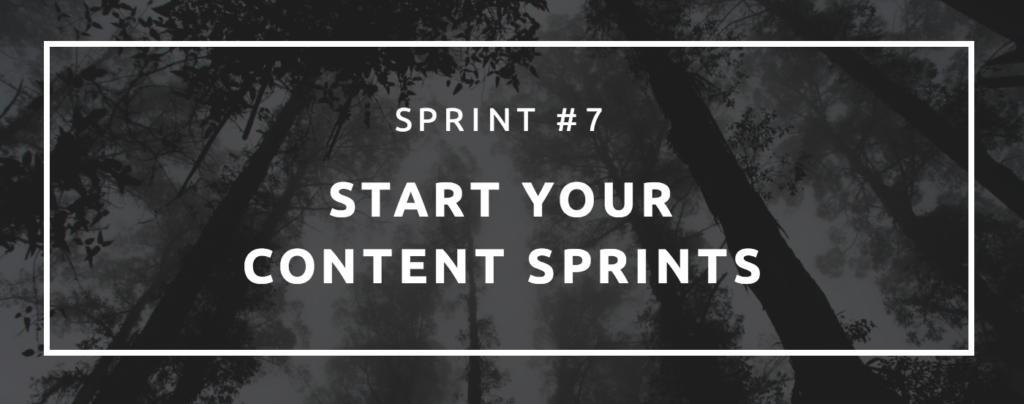“We need to be more strategic.”
These might as well be trigger words. What does that phrase really mean? The subtext is often something like:
- “Let’s slow down and not do anything and have several more meetings.”
- “Can one of you put in the hard work to figure out what being strategic actually means, then bring us some proposed frameworks for making a decision so we can scrutinize them from our armchairs?”
Strategy is a good thing, but it can be overwhelming. Where to start? What do you focus on? It always helps to create a shared definition of strategy—and a framework to discuss it—that is simple enough to understand without doing 10 years at a Big 4 consulting firm.

There are many levels of strategy in an organization, both broad and niche. In this post, I’m focusing specifically on visual content marketing strategy, which is an important and growing subset of your overall content strategy.

The Key to a Strong Visual Content Strategy
Too often content marketers proceed without a strategy, or with an overly stringent strategy. When things don’t work, they have to go back to square one to reassess the foundation of their strategy. This is painful because it often requires scrapping some good work in progress—work that would be nice to complete but would ultimately distract from the larger prize.
You don’t want to waste work. You can’t afford to either. The right visual content strategy can prevent this. But what makes a good strategy?
Several years ago, Shelly Bowen, Chief Content Strategist at Pybop, articulated the definition of good content strategy to me as “a solid foundation that gives you room to move.”
This is sound thinking to help you be more agile in your content marketing practice. However, agile doesn’t mean “wing it,” just like doing foundational work and articulating a visual content strategy doesn’t mean “set everything in stone.”
We need to marry the two modes of thinking to create the right visual content strategy (aka structure) to guide intelligent experiments. For many, this is difficult.
In his book, Growing Up Fast: How New Agile Practices Can Move Marketing and Innovation Past the Old Business Stalemates, Jascha Kaykas-Wolff identifies the “push and pull” between the desire for stability vs. the need for change as the core challenge of not only content marketing but our entire universe.
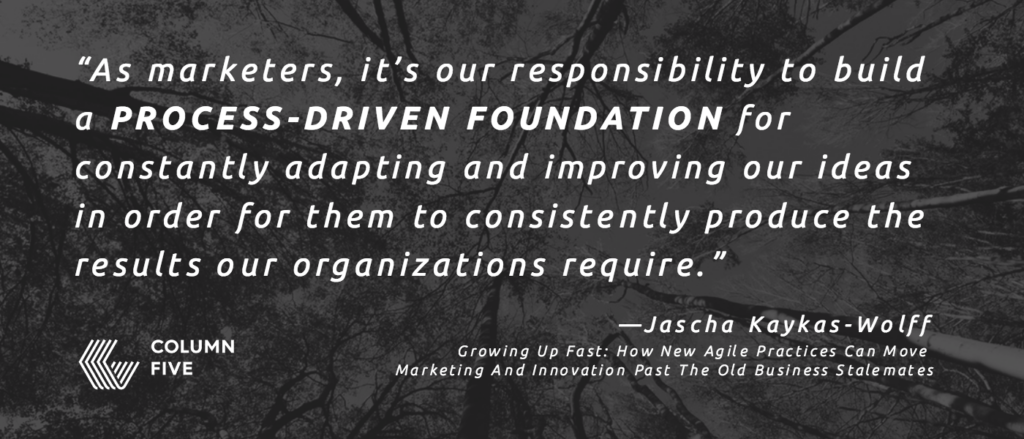
The real key to creating a good visual content strategy is balancing complementary opposites. It’s not about planning every action for the rest of your existence but rather putting in place a stronger decision-making framework to make choices for smarter experiments. Doing this well requires some thinking—which we’re here to help with.
There is an easier, less painful way to approach visual content strategy—with the right lens.
After working on thousands of visual content projects with our team at Column Five over most of the past decade, we’ve identified the essential ingredients of a useful strategy.
The framework outlined here is the result of a lot of complaining, giving up, trying again, questioning our team, then arriving back to square one with a refreshing but bewildering focus, yet again, on what is most essential. (In content and life, we are so often just beginning again.)
This straightforward, step-by-step approach guides you through 7 sprints, which build on each other to form your visual content strategy foundation. Once completed, you can feel confident your content marketing will be on the right track. Ready?

The first step in building your visual content strategy is understanding who you really are and what you’re after—your brand’s true purpose. It sounds intense, but this is crucial.
Repeat after me: “My purpose is not my measurable objective.”
The purpose of your organization is not just to double your business or increase leads by 10%. (We’ll get to that.)
Whether you are the CEO or starting out as a social media intern, your purpose lies in the answer to one very important question: Why does your business exist?
If your organization vanished, what would be lost in the world? If your group achieves what you are building together, how will the world be different?
Yes, identifying your purpose is hard work.
The reason it’s hard is because of a little thing called financial reality, which beckons all of us to go back to doing “real” work. (Debbie, don’t spend time on that vision board again, you quack! You need to be doing something real, like increasing landing page conversions by 6.3%.)
We often resist the hard work of defining and strengthening our belief in the “why?” of our organization because it feels like fake work; it doesn’t have a concrete sense of being complete like other work tasks.
But this exercise is important because your purpose works as a generator of creative electricity. It informs your culture, which powers your content creation efforts in other areas. (Download our e-books to learn more about how culture marketing can affect content and how you shape your brand.)
In addition to helping you form a visual content strategy, taking the time to do the ethereal work that you and your colleagues at times might find worthless or ill-guided offers a major reward: You get to wake up in 5 years and reflect on your career without saying, “Well, what the $*#& was the point of all of that?”
Once you start to assess what your purpose is and how it resonates with your team, you will fall into one of three categories:
- Your purpose is well-defined and exciting.
- It doesn’t exist (or it does and isn’t exciting), but you can get everyone on board with defining or redefining it.
- It’s not exciting, and you can’t get stakeholder attention on this—for now. (If you’ve struggled with aligning your content efforts, congratulations, this may be the root of the problem.)
If your team is excited about the core purpose, you’re ready to roll into sprint #2.
If you feel it needs some work, it’s time to have discussions about your core purpose.
If you can’t wrangle executive leadership to make this a priority, or they are happy with it and not changing the articulation anytime soon, you’ll have to work with it in its current state. If this is the case, it helps to ask someone to unpack the original meaning behind the purpose statement so you can find more connection to it.
However, if you are in a position to work with executive leadership, make sure to dedicate enough time to this sprint. This ensures that your purpose is a powerful source to guide your visual content strategy.
To work through this exercise with structure, consider bringing in an outside expert to facilitate the process. (We first worked with Mark Eckhardt of Common a few years ago. It can be easier for an outsider to question the ideas your group considers to be absolute truth.)
Looking ahead, from a content marketing perspective, once you know why your business exists, you’re in a position to answer the next question as it relates to your content: What is the most important story for our brand to tell?
Hopefully, your purpose is about something more than just money. Hopefully, you also care about the people in the market you’re serving. Once you know your “why” and feel good about it as a potent source for what you’re creating, you can move on to your next sprint.
After articulating your purpose in sprint #1, you can save a lot of headaches by taking the time to get on the same page about what your words mean. (Hopefully, you’re not working with a bunch of postmodern armchair linguists, but if you are, just tell them this is arbitrary and meaningless but you might as well agree on the same imaginary stuff because unity is fun.)
There are conflicting definitions of common terms used in strategic discussions, and this causes confusion in daily communication throughout the team.
So, as a focus of this sprint, which can be a quick one, build a brief glossary of important terms that will be used often in your strategic planning so you are all speaking the same language. (While you’re at it, abolish obnoxious acronyms.)
For example, what does “we need to be more strategic” really mean to your team? Or, if you are setting goals and breaking them into measurable milestones, are you now talking about objectives?
Creative debate is most effective when people share the same understanding of what important and common words mean. Agree on where this key information will live and treat the glossary as a living document.
By the end of this sprint, you’ll have made some choices at home base. Now it’s time to go outside of your own walls again.
If you are building a business and creating content that is all about you, it won’t resonate with your audience. You have a new ping-pong table in the office? That’s great! No one else cares (even though your college buddy Ronald pretends he wants to have a beer pong tourney at your office someday).
Who are you creating visual content to please and impress? Your coworkers and friends, or your potential customers? To score more than a few ego-boosting points and move toward driving actual revenue from your visual content, focus on defining the latter.
Let’s say you are growing a company and have a huge overall market for your offering. That’s great, right? Well, yes and no.
If you are defining your market as all people who like to eat food, you are trying to be too many things to too many people.
Organize your audience into smaller segments.
For example, instead of deciding your audience is everyone who likes food, you could start with a focus on people in a specific geographic region who are interested in making a change to their health routine but are too busy to cook.
Narrowing your focus need not be equated with thinking smaller. In the agile mentality, you are thinking about the work that will make the biggest impact right now, while keeping your larger purpose in mind.
Identifying an immediately addressable market segment lets you run the right experiments to give you the info you need to help expand in the future.
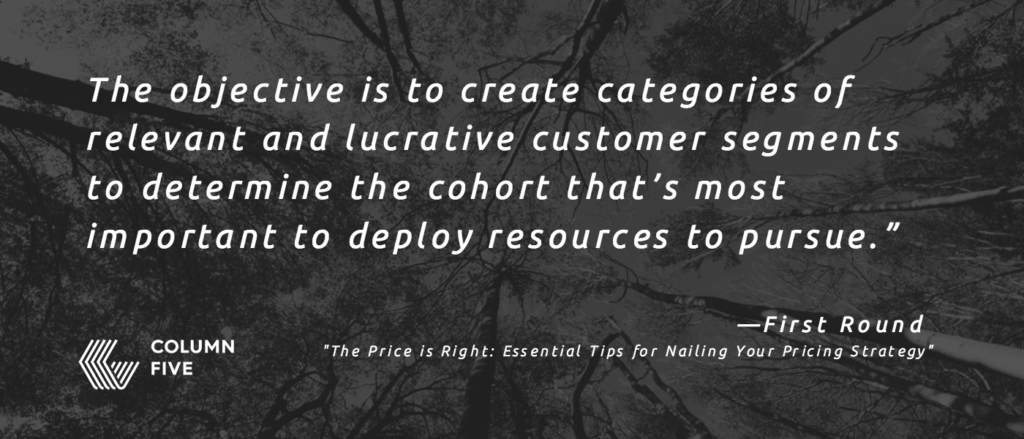
When you know who you’re specifically going after, you can create content that speaks directly to them. Getting a core audience of people who love what you do will help you grow and be able to choose other customer segments in the future.
As marketers, we sometimes make the mistake of spending too much time in our own echo chambers, speculating about what people might want. Now that you know who your specific audience segment is, you should be talking to them to find out what they want.
The goal of this sprint is to answer the question: “What are my customers’ jobs to be done?”
Specifically, you’re looking to identify the things your customer needs to do but cannot accomplish.
At this stage, talk to your audience more than your coworkers! Set up calls or in-person meetings to get this info. Think of them as interviews. Build a list of questions that will help you get inside their minds.
You want to elicit this person’s frustrations, pain points, and other issues your product or service may be able to solve for. (Spoiler: Your content is how you will communicate your solutions.)
For example, if you’re a B2B marketer and you have a new lead who is willing to take some time to answer a few questions, you might ask:
- What would it take for you to get promoted at work?
- What is the thing that bothers you the most on the commute home at the end of the day?
- What needs to change to get you to stay at your company?
- What have you tried that hasn’t worked?
- What are you doing that is working really well? Why does it work so well?
- What do you hope to accomplish in the next year?
- What is creatively fulfilling to you?
- What jobs do you fulfill on a daily/weekly/monthly basis?
- What thing is missing on your team that would make life easier?
- What fundamentals are not being handled by your group?
- How does your organization relate to experimenting and trying new things?
- What is the most promising opportunity you’re excited about in the next few months?
These important questions help you understand your individual customers and overall market, allowing you to pinpoint where and how you can provide them support. This empathy with your market is the key to creating a legitimate, true brand. When you produce this type of content, you become viewed as a trusted and helpful resource that people will want to do business with.
As you summarize and share your learnings with your team to generate content topics, communicate the audience feedback (challenges) as user stories. For example:
- As a social media marketer, I need to create visual content that is tailored to each of our priority channels, multiple times per day. Our internal design team is tied up on other initiatives most of the time, so I make my own graphics but don’t know what I’m doing.
- As an online Spanish teacher, I find it difficult to connect with my students because the video chat connection is always breaking up.
- As a freelance writer, I wish I could get into a more steady rhythm with my clients.
The work you do here and in sprint #3 (Identify Your Audience) helps you build detailed customer personas, wherein you distil all the information to create a representative “customer.”
Writing out who they are (including info like age, demographic, and even the types of movies they watch), as well as their pain points, brings these customers to life and informs all your content efforts. To create your personas quickly and easily, check out our guide to building marketing personas in under 60 minutes.
Now that you know who you are reaching and empathizing with them (you do care, right?), it’s time to find out where they are when they aren’t chasing Pokémon. This means identifying which distribution channels will help you reach your audience (and, accordingly, where you should invest your time and money).
Work on a long-term approach to creating value and building trust with your audience through distribution. Here are some key questions to get your discussions rolling:
- Where are you publishing content? Download The Ultimate Guide to Content Distribution e-book to learn more about the benefits of each channel.
- How are you promoting content? Make sure you follow best practices to get the most eyes on your content.
- What do you hope someone will do next after viewing visual content? Focus on crafting a buyer’s journey to turn your content marketing into sales.
- What publishing partnerships have been most fruitful, and what new ones would make a big impact? Everyone wants to be on TechCrunch and thinks they have a story worth publishing there. If you do, great! But you should also look for other strategic ways. What would happen if you instead tripled down on that one content partnership you started last year?
- Which of your existing channels work best for reaching your specific audience? This infographic can help you figure out the best channels.
These are important things to keep in mind from the beginning of content ideation. Every component (subject, format, distribution channel) contributes to your overall success.
I once asked a brand manager of a Fortune 100 company why brand consistency matters. He said it was simple: to create trust. As such, your content should reflect who you are at the core.
As you dive into designing content down the road, are you going to strictly follow brand guidelines, or is the team free to experiment and push the boundaries of the existing visual identity? Do you know where the brand guidelines are located, including source files and high-res versions of all elements?
There may be cases where you want to take an opportunity to get wild and weird and break the mold. This might be in the context of partnering with another brand to create a visual content experience where you don’t want either brand identity to dominate, such as this collaboration between Column Five and Sharethrough.
Regardless of the approach, it is important to identify how your visual language will be reflected in your visual content strategy. Column Five’s Creative Director, Nate Butler, suggests including these elements:
Voice
- Clear, well-defined messages in every piece of content
- A defined, distinct brand voice
- Consistent overarching messaging
Visual Language
- A cohesive brand identity (logo, color, iconography, fonts, imagery, etc.)
- A flexible, thoughtful, and scalable design system
- Clear visual hierarchy (balance and visual harmony, including grid use and whitespace)
The right answer and approach is subjective for each brand, but there is one rule that is sure to save time and money: Communicate the approach you’re going to take upfront.
This will save back and forth with designers and agency partners down the road. Make sure to get the perspective of all key stakeholders on this topic, so you don’t have someone ambush a project with a ton of edits right before publishing.
Over the course of the last six sprints, your team has put a strong foundation in place that gives you both flexibility and focus for starting your visual content experiments. Now it’s time to brainstorm and start your first content sprint.
A warning when it comes to ideation: Steer clear of “it would be cool if…” type ideas.
When you meet for ideas, everyone should bring real-world, plain language context and application of the idea in the form of user stories. They should also be prepared to tie them to your customer personas (including identifying the pain point the idea addresses).
According to Kaykas-Wolff, a good story (aka piece of content) in the context of agile marketing:
- Is told from a true user’s perspective or experience: addresses a relevant issue for them.
- Explains how value can be created for the customer: positions brand as an expert resource or help.
- Has business impact: helps further your brand goals.
- Is as specific as possible: speaks to the target audience specifically in their language.
- Is scaled for the smallest chunk of value: provides some sort of value, no matter form.
When you have your ideas, designate an owner (or Scrum Master) for the ongoing content sprints the same way an agile software product team has a Product Owner. This is key to bringing agile methodology into your visual content marketing; it also brings clarity to who is responsible for preparing for and leading the planning meetings.
As Kaykas-Wolff explains, “During the Sprint itself, individual as well as organizational goals are agreed on, and are followed using the agile methods that enable listening and acting fast. Agile marketing processes include daily scrums, sprint planning, a task board, a plan of workflow, retrospective analysis, and improvement.”
In short: Plan, complete, measure, tweak. Rinse and repeat. That’s how you tackle visual content marketing.
Looking Ahead
Now that you’ve decided why you’re going to start this journey into creating high-quality visual content, all of your problems are over—except for the fact that you’ll face new competitive threats, egos will flare, someone will hate this entire idea, and another person will only come to half the meetings and sabotage the whole effort. (The modern workplace is fun, isn’t it?)
Remember at all times: This is possible but not easy.
It’s important to provide your team the right support structure to design experiments with testable hypotheses, not to pressure yourselves to come up with the perfect, permanent plan.
On that note, learning how to work with these 4 types of creative thinkers will help you get the most from your team. In addition to understanding each person’s strengths in creative processing, you must also establish the time horizon for consideration and the desired level of detail for the plan.
When things get murky, go back to sprint #1 and see how things are going, in order, in each area. This will help you make sure you’re staying the course.
Want to learn more? Find out why visual content helps your brand and how embracing good design can give your company a competitive edge. Of course, if you need a little help with your visual content strategy, we’re happy to chat.



